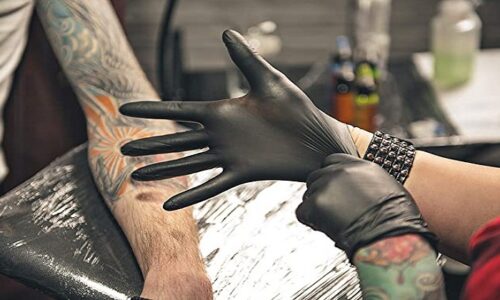
Rosacea is a chronic inflammatory skin condition that primarily affects the face. It is characterized by facial redness, flushing, visible blood vessels, and small, pus-filled bumps. In some cases, Rosacea may also cause eye irritation and swelling.
The exact cause of Rosacea is not fully understood, but it is believed to be related to a combination of genetic, environmental, and lifestyle factors. Triggers for Rosacea may include sun exposure, hot or cold weather, spicy foods, alcohol, stress, and certain medications.
Rosacea is a chronic condition that worsens over time if left untreated. However, it can be managed with a combination of lifestyle changes, such as avoiding triggers and protecting the skin from the sun, as well as medication and skincare treatments prescribed by a healthcare professional, such as Dermatologist in Rawalpindi.
If you suspect you may have Rosacea, it’s essential to see a dermatologist or healthcare professional for an accurate diagnosis and appropriate treatment.
Who can get Rosacea?
Rosacea can affect anyone, but it is more common in fair-skinned individuals with Celtic or Scandinavian ancestry. It is also more common in women than men, although men may experience more severe symptoms.
While anyone can develop Rosacea, there are certain risk factors that may increase the likelihood of developing the condition. These include:
- Age: Rosacea typically develops in people over the age of 30.
- Family history: If you have a family history of Rosacea, you may be more likely to develop the condition.
- Skin type: People with fair skin that is easily damaged by the sun are more likely to develop Rosacea.
- Gender: Rosacea is more common in women than men, although men may experience more severe symptoms.
Certain medical conditions: People with certain medical conditions, such as autoimmune disorders or gastrointestinal disorders, may be at a higher risk of developing Rosacea.
If you suspect that you may have Rosacea, it’s important to see a dermatologist or healthcare professional for an accurate diagnosis and appropriate treatment.
Symptoms of Rosacea
The symptoms of Rosacea can vary from person to person, but the most common signs and symptoms of the condition include:
-
Facial redness
Rosacea often causes persistent redness on the cheeks, nose, forehead, and chin.
-
Flushing
People with Rosacea may experience sudden, temporary episodes of facial flushing or blushing.
-
Visible blood vessels
Small, visible blood vessels may appear on the face.
-
Bumps and pimples
Rosacea may cause small, red, pus-filled bumps or pimples on the face.
-
Eye irritation
In some cases, Rosacea may cause eye dryness, irritation, or swelling.
-
Thickened skin
Over time, Rosacea may cause the skin on the nose to thicken and become bumpy.
-
Burning or stinging
Rosacea may cause a burning or stinging sensation on the face.
-
Swelling
In some cases, Rosacea may cause facial swelling.
The severity of Rosacea can vary from mild to severe, and symptoms may come and go over time. If you suspect that you may have Rosacea, it’s important to see a dermatologist or healthcare professional for an accurate diagnosis and appropriate treatment.
Treatment of Rosacea
The treatment of Rosacea typically involves a combination of lifestyle changes, skincare treatments, and medication prescribed by a dermatologist or healthcare professional. The specific treatment approach may vary depending on the severity of the condition and the individual’s symptoms.
Lifestyle changes that may help manage Rosacea include:
Avoiding triggers
Identifying and avoiding triggers that can worsen rosacea symptoms, such as sun exposure, hot or cold weather, spicy foods, alcohol, and stress.
Gentle skincare
Using gentle skincare products that are free of alcohol and other irritants and avoiding harsh scrubs or exfoliants.
Sun protection
Wearing sunscreen with at least SPF 30 and protective clothing to prevent sun damage.
Skincare treatments that may be recommended for Rosacea include:
-
Topical medications
Creams, gels, or lotions containing antibiotics, azelaic acid, or other anti-inflammatory ingredients may be prescribed to reduce inflammation and redness.
-
Laser or light therapy
These treatments can help to reduce redness and visible blood vessels.
-
Chemical peels
Mild chemical peels may be used to improve skin texture and reduce redness.
It’s important to work closely with a dermatologist or healthcare professional to develop an individualized treatment plan for Rosacea. With proper treatment, most people with Rosacea can manage their symptoms and improve the appearance of their skin. You can also take help from professionals and Best Dermatologist in Lahore.




